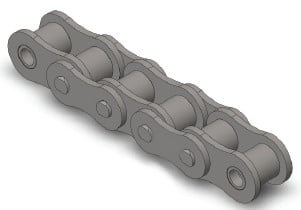? Type of input electrical power (electric motor, internal combustion engine with mechanical or hydraulic drive).
? Type of gear to be driven.
? Amount of horsepower essential to supply suffi cient electrical power for the driven shaft.
? Full load speed from the quickest running shaft (rpm).
? Desired speed in the slow working shaft ( or the necessary speed ratio). NOTE: If speeds are variable identify the horsepower to become  transmitted at every single velocity.
transmitted at every single velocity.
? Diameters from the drive and driven shafts . . . This worth might restrict the minimum number of teeth to the sprockets.
? Center distance of the shafts.
? Note the position and any space limitations that could exist. Typically these limitations are over the optimum diameter of sprockets (this restricts using single strand chains) or even the width on the chain (this restricts using multi-strand chains).
? Conditions of the drive which includes a determination of your class of load (uniform, reasonable or hefty), severe operating temperatures or chemically aggressive environments really should be mentioned.
Abbreviations Used in Equations
N Amount of teeth over the large sprocket.
n Amount of teeth within the modest sprocket.
R Pace in revolutions per minute (rpm) on the substantial sprocket.
r Speed in revolutions per minute (rpm) from the tiny sprocket.
C Shaft center distance in chain pitches.
HP Horsepower rating of your drive motor or engine.
KW Kilowatt power rating of drive motor or engine if utilizing metric units.
SF Services Factor
